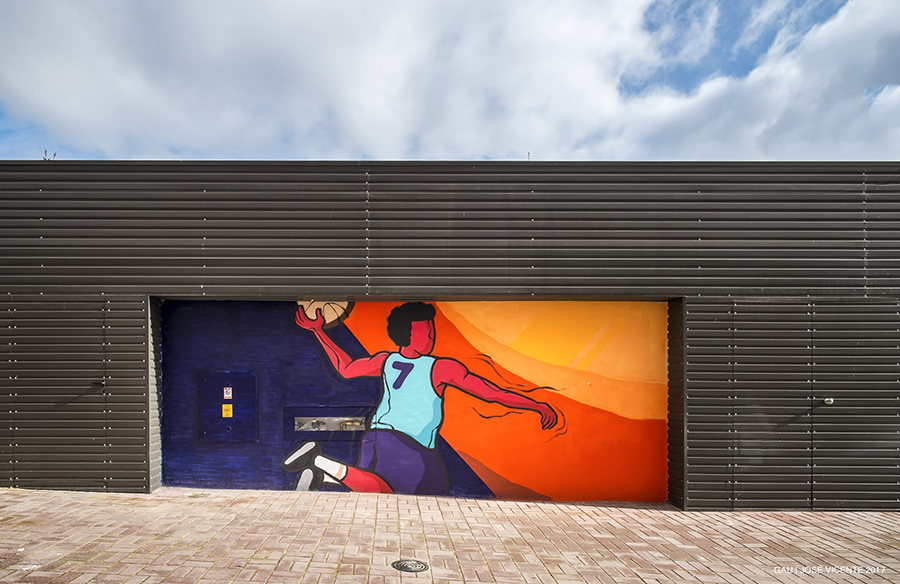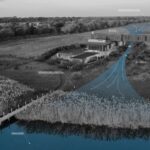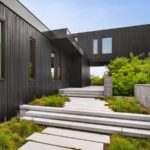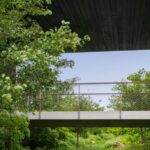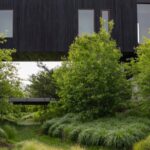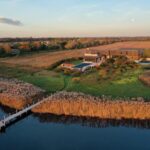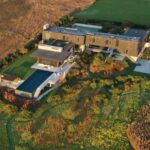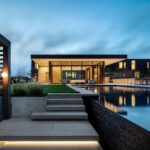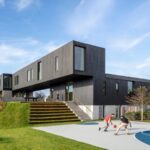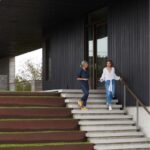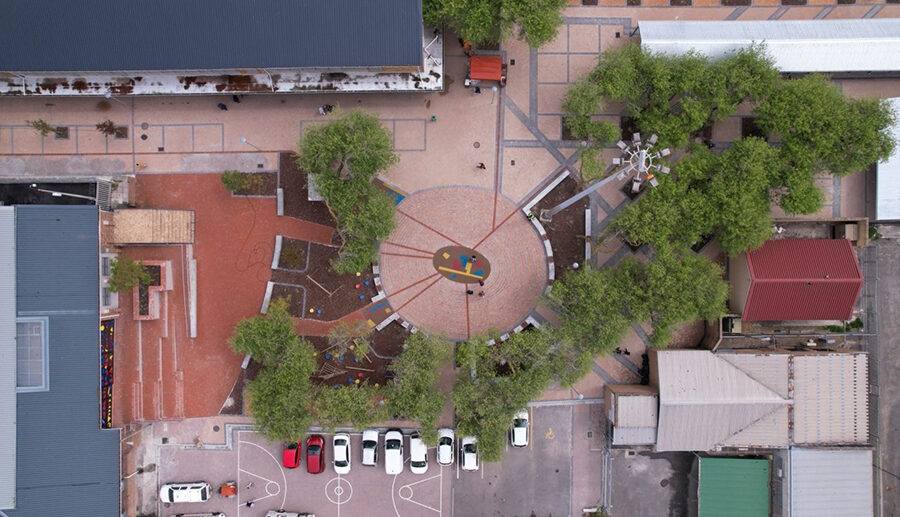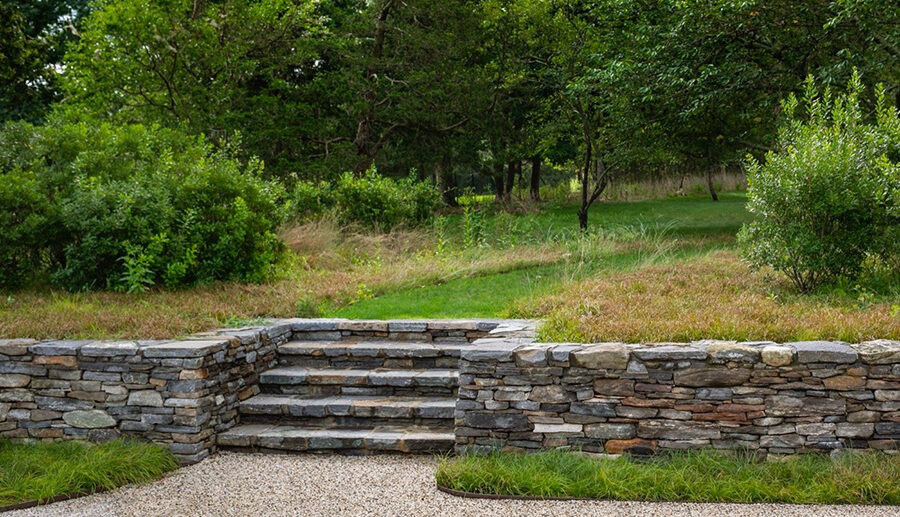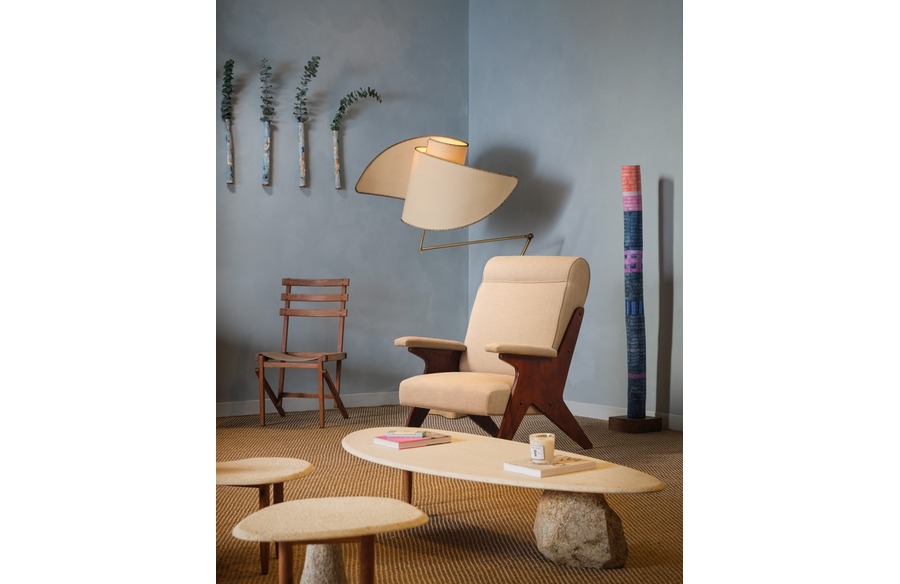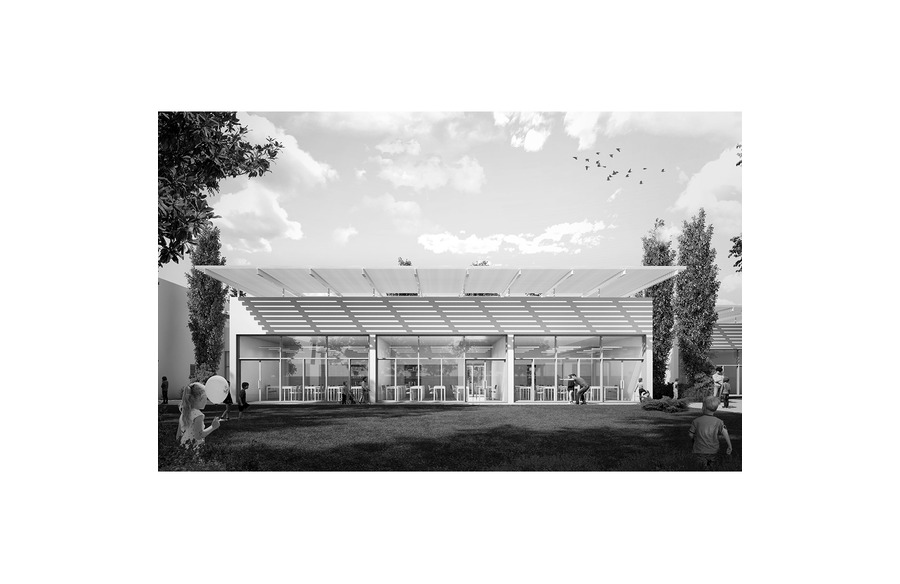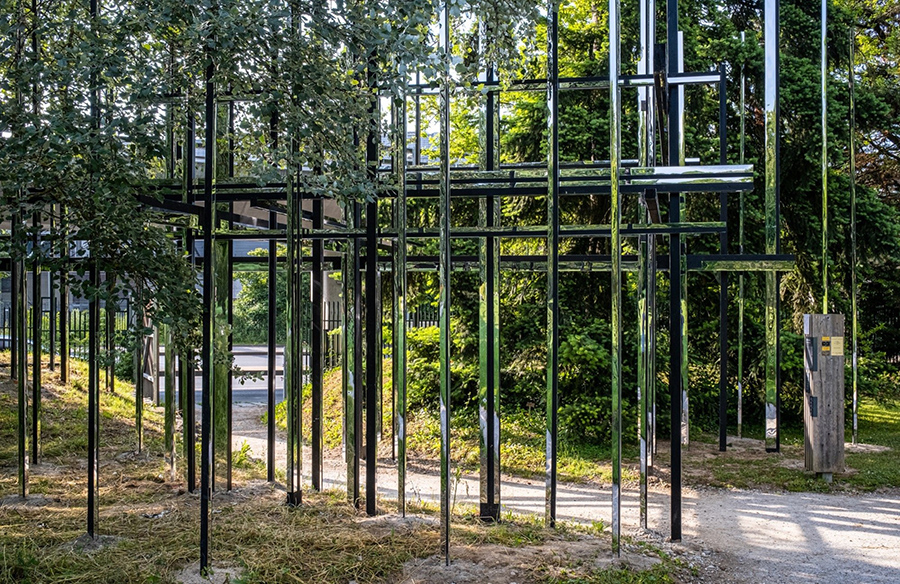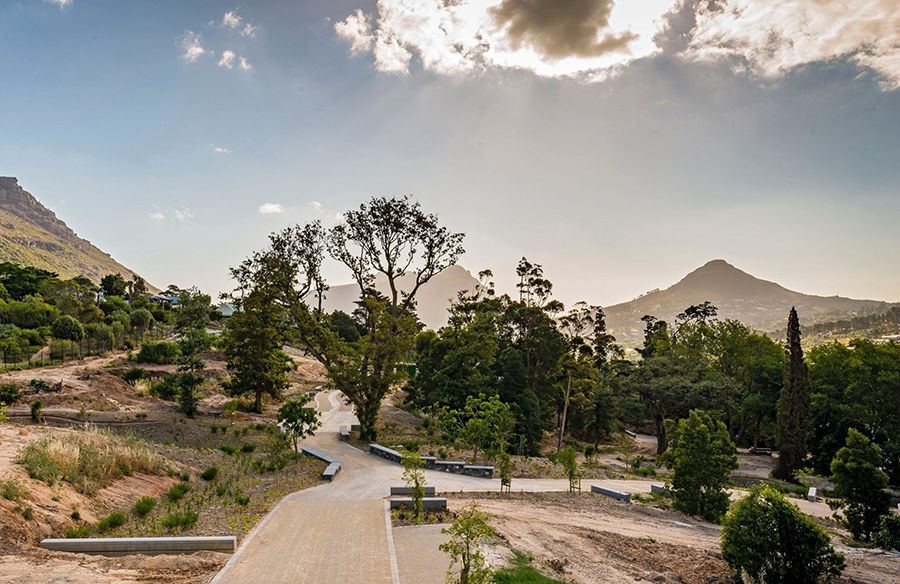Bridging Natural Landscapes The Concept of Bridge House

The Bridge House, designed by LaGuardia Design Group, stands as a testament to the innovative collaboration between landscape architects and architects. Situated on a four-acre former agricultural site, the project aimed to seamlessly integrate the proposed building with its natural surroundings while addressing significant environmental challenges.

Embracing the Watershed
The landscape architects conducted a thorough analysis of the site’s topography, revealing a natural rise in terrain adjacent to a freshwater pond. Rather than diverting stormwater runoff, the design embraced the existing watershed, creating a central bioswale that ran through and under the house. This bio-swale served multiple purposes, facilitating stormwater infiltration, capturing sediment, and remediating years of agricultural contaminants.

Environmental Mitigation
The site, once a vacant farmland parcel, had suffered decades of chemical and pesticide application, leading to toxic runoff that affected the adjacent tidal pond. The design team’s primary goal was to address these environmental issues while creating a residence deeply rooted in the surrounding habitat.
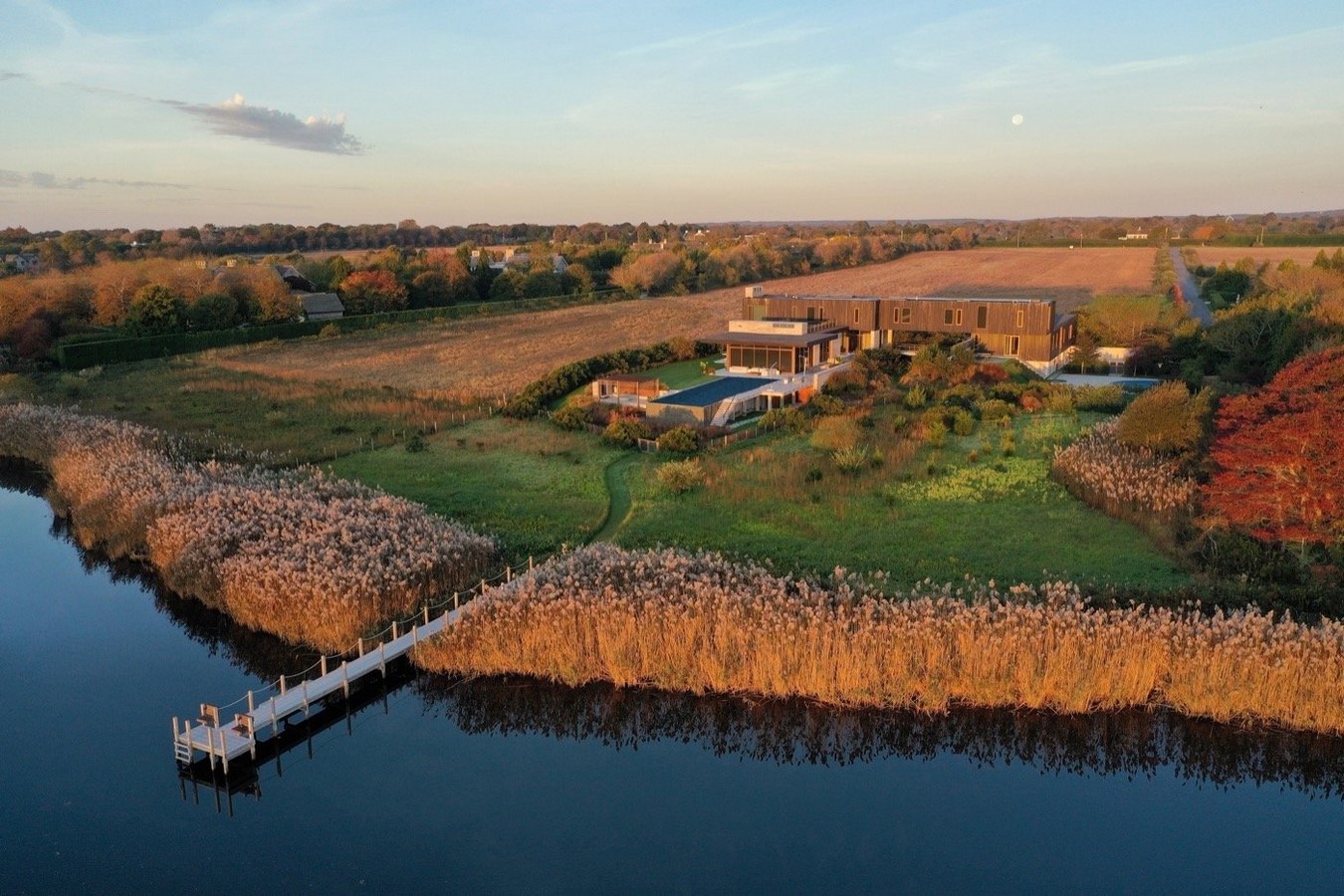
Collaborative Approach
Collaboration between landscape architects and architects was integral from the project’s inception. The master plan for the single-family house was developed with careful consideration of the existing viewshed, watershed, and plant ecologies. This collaborative process ensured that the structures harmonized with the natural landscape seamlessly.
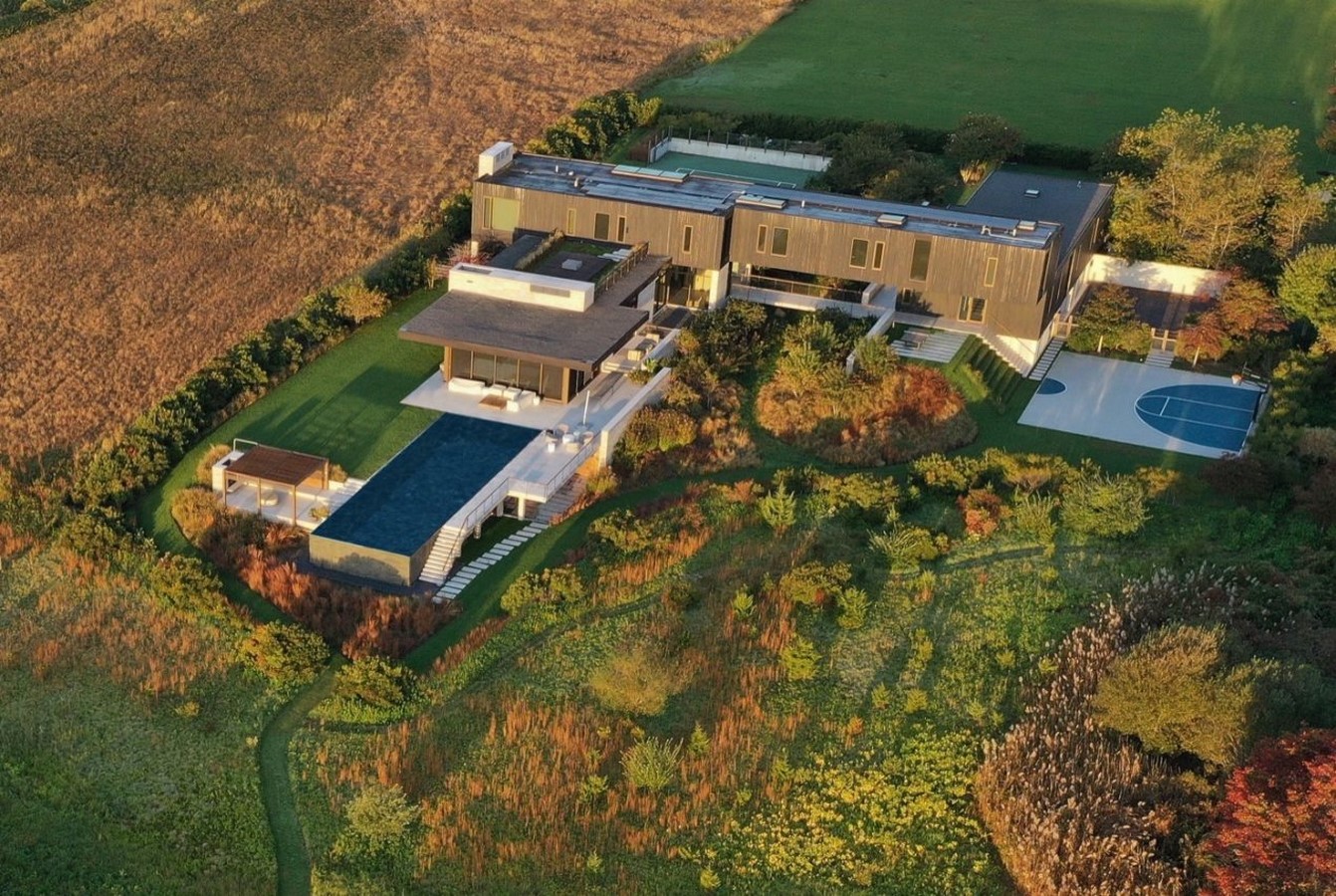
Innovative Design Solutions
To slow down runoff and enhance water retention, the soils were designed to capture and hold water, complemented by low weir walls. The use of permeable surfaces, such as grass block pavers and interplanted pavers, minimized impervious site coverage and encouraged rainwater infiltration.
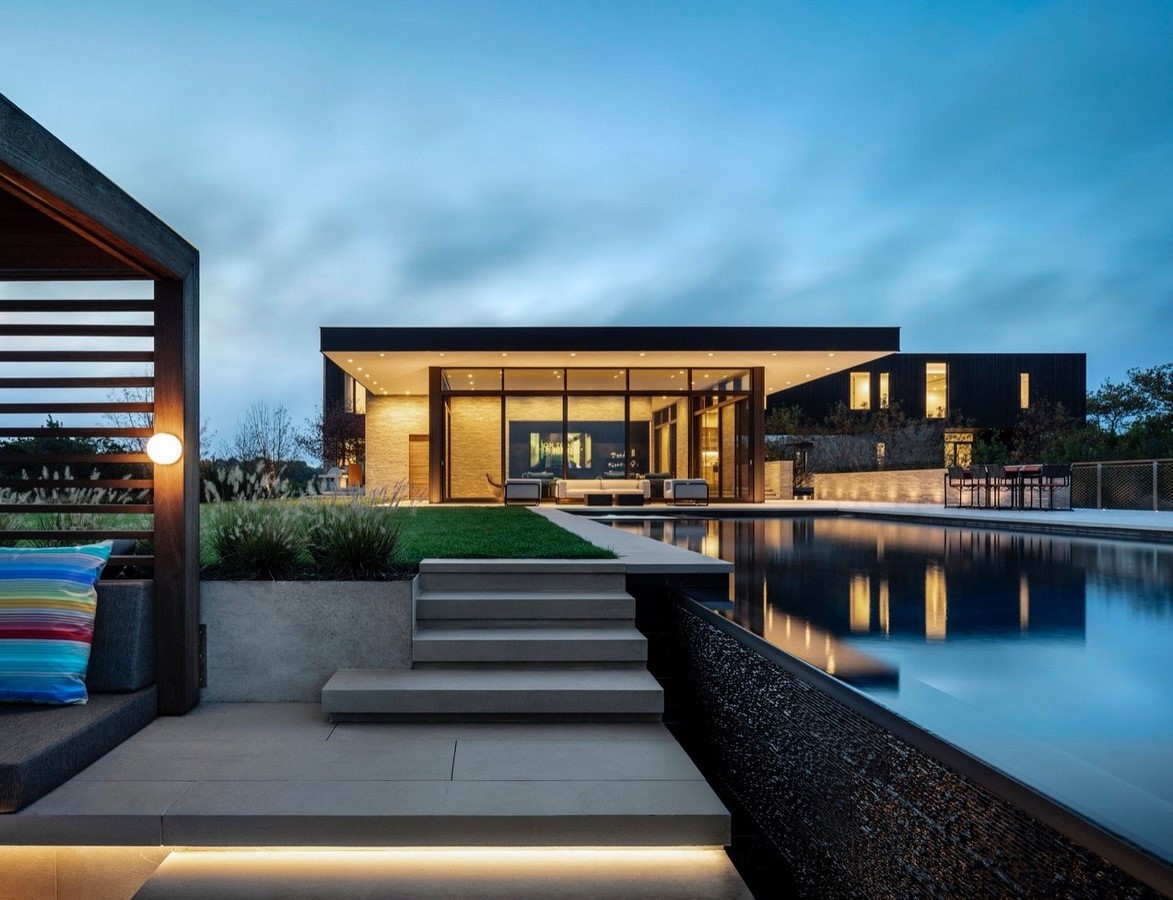
Integrating Art and Sensory Experience
Artistic elements, including embedded art pieces and murals, were incorporated into the landscape design, enhancing the sensory experience and fostering a connection with the environment. The introduction of a bridge over the bioswale heightened users’ awareness of the surrounding landscape, creating a visual and experiential connection with nature.

Promoting Biodiversity
Native plantings and diverse ecosystems were established within the bioswale, creating habitats for pollinators and wildlife. Grass drifts, perennials, and native trees were strategically placed to provide year-round interest and enhance the ecological resilience of the site.
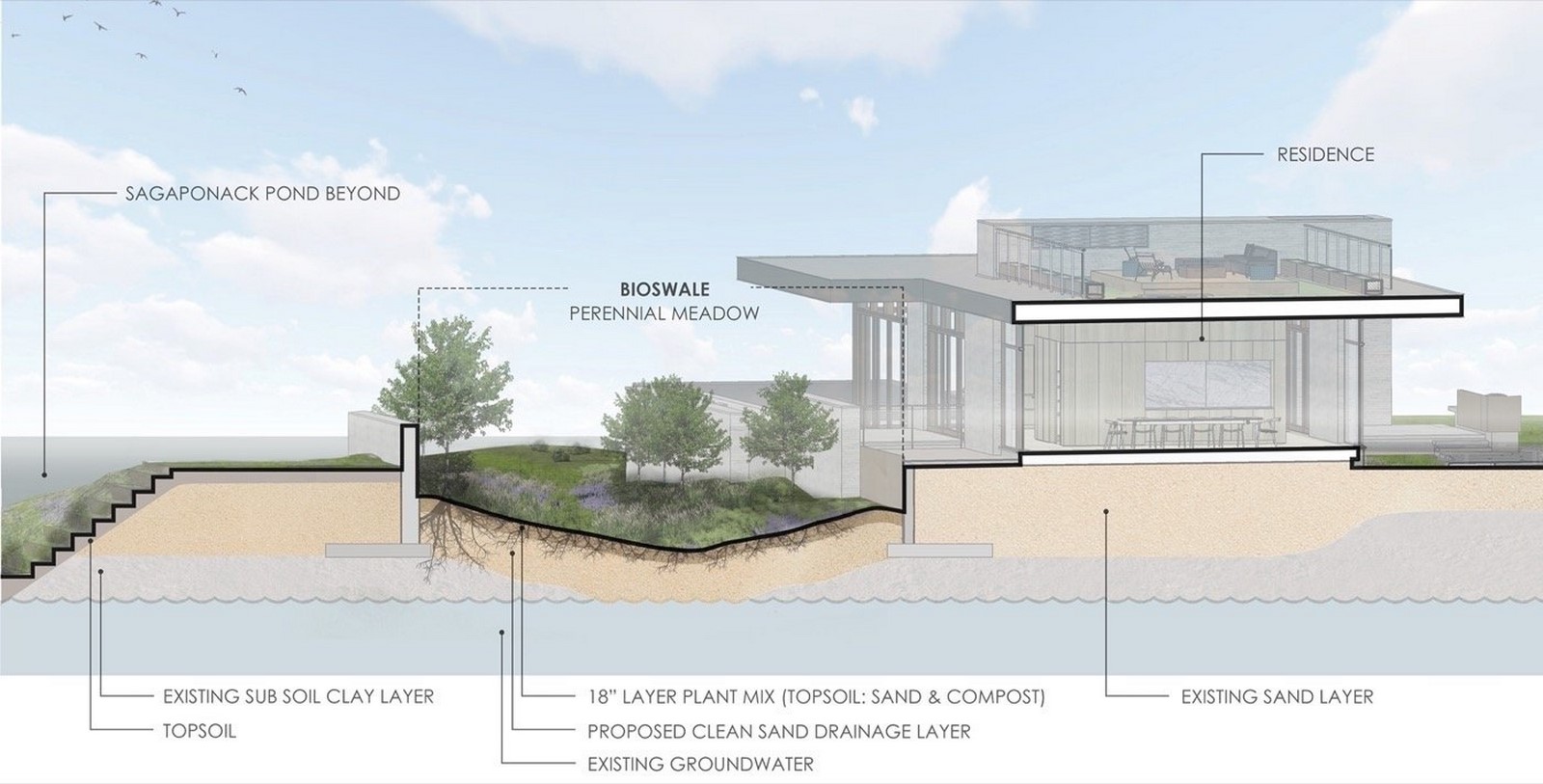
In conclusion, Bridge House exemplifies how collaborative design, environmental stewardship, and innovative solutions can transform a site plagued by environmental challenges into a thriving ecosystem that benefits both residents and the surrounding environment.


